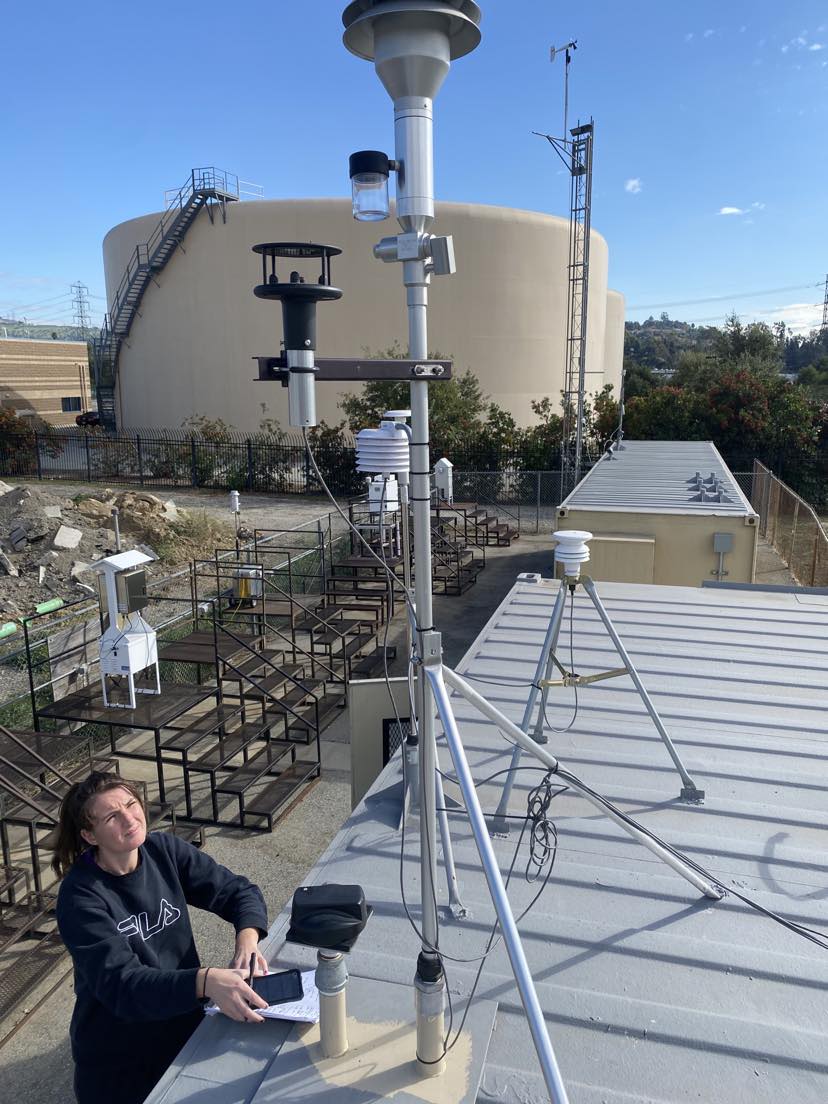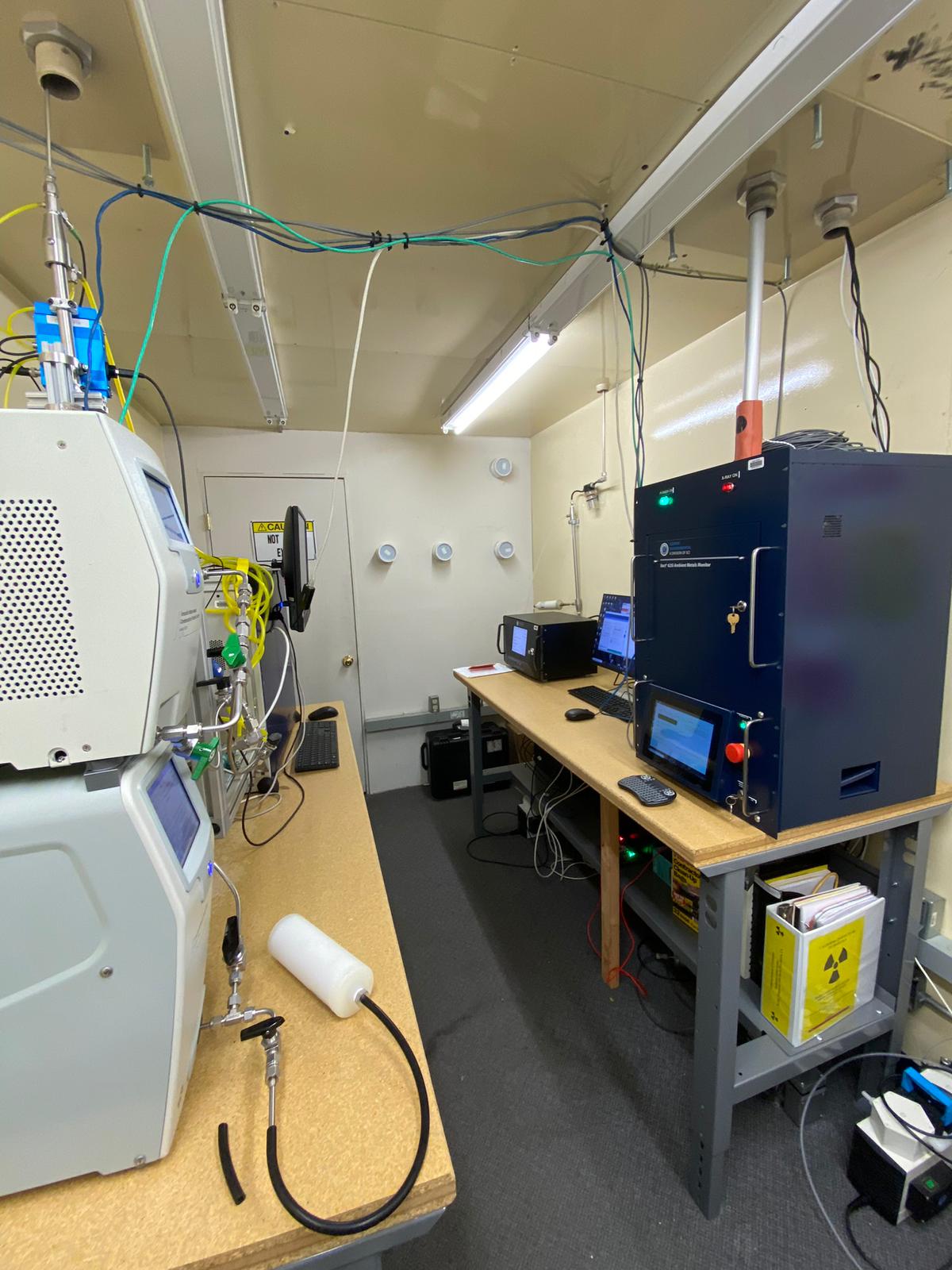Tim Lieuwen Named Georgia Tech’s Executive Vice President for Research
Feb 20, 2025 — Atlanta

Tim Lieuwen, Executive Vice President for Research
Following a nationwide search, Georgia Tech President Ángel Cabrera has named Timothy Lieuwen the Executive Vice President for Research (EVPR). Lieuwen has served as interim EVPR since September 10, 2024.
“Tim’s ability to bridge academia, industry, and government has been instrumental in driving innovation and positioning Georgia Tech as a critical partner in tackling complex global challenges,” said Cabrera. “With his leadership, I am confident Georgia Tech will continue to expand its impact, strengthen its strategic collaborations, and further solidify its reputation as a world leader in research and innovation.”
A proud Georgia Tech alumnus (M.S. ME 1997, Ph.D. ME 1999), Lieuwen has spent more than 25 years at the Institute. He is a Regents’ Professor and holds the David S. Lewis, Jr. Chair in the Daniel Guggenheim School of Aerospace Engineering. Prior to the interim EVPR role, Lieuwen served as executive director of the Strategic Energy Institute for 12 years. His expertise spans energy, propulsion, energy policy, and national security, and he has worked closely with industry and government to develop new knowledge and see its implementation in the field.
Lieuwen has been widely recognized for his contributions to research and innovation. He is a member of the National Academy of Engineering, as well as a fellow of multiple other professional organizations. Recently, he was elected an International Fellow of the U.K.’s Royal Academy of Engineering, one of only three U.S. engineers in 2024 to receive this prestigious commendation. The honor acknowledges Lieuwen’s contributions to engineering and his efforts to advance research, education initiatives, and industry collaborations.
He has authored or edited four books, published over 400 scientific articles, and holds nine patents — several of which are licensed to industry. He also founded TurbineLogic, an analytics firm working in the energy industry. Additionally, Lieuwen serves on governing and advisory boards for three Department of Energy national labs and was appointed by the U.S. Secretary of Energy to the National Petroleum Council.
The EVPR is the Institute’s chief research officer and directs Georgia Tech’s $1.37 billion portfolio of research, development, and sponsored activities. This includes leadership of the Georgia Tech Research Institute, the Enterprise Innovation Institute, nine Interdisciplinary Research Institutes and numerous associated research centers, and related research administrative support units: commercialization, corporate engagement, research development and operations, and research administration.
“I am honored to step into this role at a time when research and innovation have never been more critical,” Lieuwen said. “Georgia Tech’s research enterprise is built on collaboration — across disciplines, across industries, and across communities. Our strength lies not just in the breakthroughs we achieve, but in how we translate them into real-world impact.
“My priority is to put people first — empowering our researchers, students, and partners to push boundaries, scale our efforts, and deepen our engagement across Georgia and beyond. Together, we will expand our reach, accelerate discovery, and ensure that Georgia Tech remains a driving force for progress and service.”
Shelley Wunder-Smith | Director of Research Communications
shelley.wunder-smith@research.gatech.edu
LA Fires Trigger Temporary Spike in Airborne Lead Levels
Feb 20, 2025 — Atlanta, GA

The Atmospheric Science and Chemistry mEasurement NeTwork (ASCENT) site collects real-time data during the Los Angeles wildfires. Courtesy: Haroula Baliaka
As the Los Angeles fires quickly spread starting Jan. 7, with wind gusts approaching 100 mph, scientists observed a 110-fold rise in airborne lead levels. This spike had receded by Jan. 11.
The fires enabled the first real-time data on airborne lead, thanks to a pioneering air quality measurement network known as Atmospheric Science and Chemistry (ASCENT), a nationwide initiative funded by the National Science Foundation, operating in 12 sites across the U.S.
ASCENT measured tiny particles smaller than 2.5 micrometers in diameter (PM2.5) — small enough to enter the lungs and bloodstream. Unlike typical wildfires that burn natural materials such as grass and trees, the Eaton Canyon and Palisades fires burned through infrastructures like homes, including painted surfaces, pipes, vehicles, plastics, and electronic equipment. This raised concerns about the toxicity of these particles in the air, especially since many of the buildings were constructed before 1978, when lead paint was still commonly used.
Lead is a toxic air contaminant that poses significant health risks, particularly for children, who are more vulnerable to its neurodevelopmental effects. While chronic lead exposure is well-documented, the effects of short-term spikes, like those recorded during these fires, are less understood.
“Our work through ASCENT,” said Sally Ng, Georgia Tech’s Love Family Professor of Chemical and Biomolecular Engineering and Earth and Atmospheric Sciences and the network’s principal investigator, “has provided us with new insights into the air we breathe, with unprecedented levels of detail and time resolution. Beyond the mass concentration of PM2.5 that is typically measured, we are now able to detect a wide range of chemical components in the aerosols in real time, to better understand and evaluate to what extent one is exposed to harmful pollutants.”
Investigators used several instruments to obtain hourly measurements at the ASCENT monitoring site in Pico Rivera, approximately 14 miles south of the Eaton Canyon fire, to assess atmospheric lead during the wildfires.
“Our findings showcased the importance of having real-time measurements of the chemical species that comprise particulate matter,” said California Institute of Technology Ph.D. candidate in atmospheric chemistry and ASPIRE researcher Haroula Baliaka. “During the LA fires, we provided the public with timely information about what they were breathing and how air quality evolved in the days that followed.”
This research has been published in the CDC’s Morbidity and Mortality Weekly Report.

Investigators used measurements recorded hourly at the ASCENT monitoring site in Pico Rivera, approximately 14 miles south of the Eaton Canyon fire, to assess atmospheric lead during the Eaton Canyon and Palisades fires. Courtesy: Haroula Baliaka

The ASCENT facility in Pico Rivera is equipped with a range of aerosol measurement instruments, including the Aerosol Chemical Speciation Monitor (ACSM) for non-refractory aerosols, Xact for detecting trace metals, Aethalometer for assessing black/brown carbon, and the Scanning Mobility Particle Sizer (SMPS) to analyze aerosol size distribution and concentration. Courtesy: Haroula Baliaka
Angela Barajas Prendiville
Director, Media Relations
Georgia Tech Research Targets ‘Forever Chemicals’ in Drinking Water
Feb 16, 2025 — Atlanta, GA

Yongsheng Chen, Bonnie W. and Charles W. Moorman IV Professor in environmental engineering at Georgia Tech
Someday, your drinking water could be completely free of toxic “forever chemicals.”
These chemicals, called PFAS (per- and polyfluoroalkyl substances), are found in common household items like makeup, nonstick cookware, dental floss, batteries, and food packaging. PFAS permeate the soil, water, food, and air, and they can remain in the environment for millennia. Once inside the human body, PFAS can persist for years, suppressing the immune system and increasing cancer risk.
Georgia Tech researchers, armed with a cutting-edge machine learning (ML) model, are spearheading a multi-university initiative. Their goal? To design a better membrane that efficiently removes PFAS from drinking water, a significant source of human exposure.
“More than 200 million Americans in all 50 states are affected by PFAS in drinking water, with 1,400 communities having levels above health experts’ safety thresholds,” noted the study’s principal investigator Yongsheng Chen, Bonnie W. and Charles W. Moorman IV Professor in Georgia Tech’s School of Civil and Environmental Engineering. Chen also directs the Nutrients, Energy, and Water Center for Agriculture Technology, or NEW Center. “Our research aims to provide a scalable, efficient, and sustainable solution for mitigating these toxic chemicals’ impact on human health and the environment.”
The resulting work, funded with over $10 million in multiyear grants from the U.S. Department of Agriculture (USDA), the National Science Foundation, and the Environmental Protection Agency (EPA), was recently published in Nature Communications.
Sewage Treatment Limitations
Conventional water treatment processes are ineffective at removing PFAS. Too often, traditional cleansing methods, such as using chlorine to kill pathogens in water, create harmful byproducts.
“Solving one problem creates another problem,” said Chen.
He has already used ML and artificial intelligence in precision agriculture to monitor nutrient levels in plants and insists that tackling PFAS removal similarly requires new approaches. Rather than treating an entire body of water, Chen’s team first separated PFAS from the water stream. Success depended on finding the right membrane material to isolate the chemicals in the water.
Chen relied on a team of 10 Ph.D. students and nine research scientists to perform the ML modeling. In addition to Georgia Tech, two other schools contributed people and laboratory expertise. The University of Wisconsin-Madison (UWM) validated the model with molecular simulations, while Arizona State University (ASU) trained it using data from scientific literature and their lab.
“Applying machine learning to membrane separation represents an exciting frontier for environmental engineering,” said Tiezheng Tong, an associate professor of environmental engineering in ASU’s School of Sustainable Engineering and the Built Environment.
This is another step in tackling PFAS pollution, a widespread problem that has recently received significant public attention due to PFAS’ toxic nature and the recent EPA ruling on PFAS in drinking water, he said.
“By integrating with molecular simulation tools, we can better understand PFAS transport across nanofiltration and reverse osmosis membranes, pushing the boundary of fundamental science relating to membrane separation,” Tong said.
ML Accelerates Membrane-Material Discoveries
Using ML modeling significantly sped up the discovery process. For instance, one Ph.D. student in Chen’s lab used trial and error over two years to pinpoint one promising membrane. Machine learning modeling allowed the team to find eight membrane candidates 10 to 20 times faster, reducing discovery time from years to a few months.
“Our molecular dynamics simulations reveal that electrostatic interactions, size exclusion, and dehydration play critical roles in governing the transport of PFAS molecules across polyamide membranes,” Ying Li explained. Li is an associate professor of mechanical engineering at UWM. “These calculations indicate that electrostatic interactions dominate PFAS rejection, with charged functional groups significantly influencing transport behavior. The simulation results provide fundamental insights that align with ML predictions, highlighting the key molecular determinants of PFAS removal efficiency.”
Addressing PFAS Exposure in Agriculture
By addressing PFAS contamination, this research could also benefit the agriculture industry, which depends on fertilizer sourced from water treatment plants. Wastewater biosolids are processed into fertilizer, offering farmers and ranchers a cheaper alternative to chemical fertilizers. Unfortunately, PFAS-tainted fertilizers from sewage sludge have contaminated significant amounts of land and livestock. Industry groups estimate that almost 70 million acres of U.S. farmland could be contaminated by these forever chemicals.
By funding this research, the USDA hopes that an effective membrane will help the United States reclaim this crucial resource.
“Synthesizing a very smart membrane to get rid of PFAS also allows us to recover the fertilizer from municipal wastewater treatment plants,” Chen said. “Such a membrane could enable us to get rid of things we don’t want and keep the things we need, so we can keep the water for irrigation or other applications.”
Eliminating PFAS in fertilizers also could help address the mismatch of food and water demand in urban versus rural areas since 80% of the demand resides in cities. PFAS removal could directly support urban area resource recovery and food production.
“Our goal is achieving a circular economy where materials never become waste, and nature is regenerated,” Chen said.
What’s Next
The team will fine-tune the model and add more data to improve its training features. Chen will synthesize membranes in his lab to further test the model's PFAS removal predictions.
Today, scientists have found ways to remove long chains of PFAS, but the shorter chains of these chemicals persist, explained Chen.
“If we can better understand the mechanism, we’ll be able to design a good material membrane to get rid of all PFAS. That could be game-changing.”
— By Anne Wainscott-Sargent
Funding
This work is partially supported by the NSF (Award Nos. 2112533, 2427299, 2345543, Y.C.; 2448130, T.T.; and 2345542, Y.L.).
Y.C. acknowledges the financial support by the USDA (Award No.2018−68011-28371), NSF-USDA (Award No. 2020-67021-31526), and EPA (Award No. 840080010).
T.T. acknowledges the support of the USDA National Institute of Food and Agriculture (Hatch Project COL00799, accession 1022591).
Y.L. acknowledges the financial support by the National Alliance for Water Innovation (NAWI), funded by the US DOE, Office of Energy Efficiency and Renewable Energy (EERE), Advanced Manufacturing Office, under Funding Opportunity announcement Number DE-FOA-0001905, through a subcontract to the University of Wisconsin-Madison.

Ying Li, associate professor of mechanical engineering at University of Wisconsin-Madison

Tiezheng Tong, associate professor of environmental engineering at Arizona State University
Shelley Wunder-Smith | Director of Research Communications
shelley.wunder-smith@research.gatech.edu
Earth Day: "Has the Economy Outgrown the Planet?"
Join us for a panel and conversation (with a reception to follow) as we celebrate Earth Day 2025. Registration is free.
Research Town Hall - Feb. 27, 2025
The Georgia Tech research community is invited to the virtual Research Town Hall hosted by interim EVPR Tim Lieuwen on Thursday, February 27, 2025 at 11 a.m.
Agenda includes a discussion led by Tim Lieuwen and Tanta Myles on how to conduct research collaboratively and securely given the continual shifts in the regulatory landscape for research.
There will be time for Q&A as well.
Zoom link: https://gatech.zoom.us/j/97247122372
Tech Square Microgrid Workshop Sparks Ideas For Energy Resiliency Assets
Feb 04, 2025 — Atlanta, GA

Scott Duncan, Georgia Tech Principal Research Engineer and SEI's Microgrids Initiative Lead provides an overview of the Tech Square Microgrid during the TSMG Workshop.
On Jan. 13, the Georgia Tech Strategic Energy Institute (SEI), Southern Company, and Georgia Power hosted a workshop aimed at imparting new information and sparking innovative ideas around the Tech Square Microgrid (TSMG) and the use of its data in education and research.
Launched in 2021 with a 1.4-megawatt capacity, the microgrid is located on Williams Street, just south of Fifth Street in Tech Square. It is a joint project between Georgia Power and Georgia Tech.
The workshop brought together experts and enthusiasts to discuss the current operations of the TSMG, an essential asset for the energy resilience of Georgia Tech’s High-Performance Computing Center located next to Coda, and to share Georgia Tech studies that use data from the microgrid.
The workshop started with an overview of the microgrid’s current status and capabilities as a resilience resource, provided by Collins Pratt, the TSMG managing engineer from Georgia Power. This was followed by a keynote on TSMG modeling and simulation presented by GTRI research engineer and SEI’s lead on cybersecurity of critical infrastructure initiative, Sam Litchfield, and Adam King, a GTRI research engineer and Ph.D. student. Their insights into the state of the art of microgrid modeling and its role in assessing dependencies between energy grid resources set the stage for the rest of the workshop discussions.
During the panel on “Microgrids and Living Labs,” panelists from academia, Georgia Tech’s Office of Sustainability, and Georgia Power shared their perspectives on microgrid infrastructure and its role in research and education. The discussion emphasized the importance of microgrids as living labs, their potential for wider deployment in distributed energy systems, and the need for skilled graduates in the electrical utility workforce.
To conclude the event, attendees toured the microgrid site across the street. The tour, led by Pratt, provided a firsthand look at the microgrid infrastructure and its operating capabilities.
Reflecting on the significance of the microgrid, SEI’s Interim Executive Director Christine Conwell said, "The data from the microgrid is a vital resource for researchers at Georgia Tech and our metro Atlanta partners. It not only showcases our work in energy resilience but also serves as a living laboratory for developing innovative energy solutions."
Georgia Tech Senior Research Engineer Scott Duncan, who leads the Microgrids initiative at SEI organized the workshop along with Southern Company Principal Research Engineer Andrew Ingram. "The details shared during the workshop have sparked numerous ideas, from an array of perspectives across Georgia Tech, on how we can further utilize the microgrid and the unique data coming from its operations,” said Duncan. “The insights gained today will undoubtedly seed future research and collaborations, pushing the boundaries of what we can achieve in energy resilience."

Workshop Speakers and Panelists at the Tech Square Microgrids Workshop

Keynote by GTRI research engineer and SEI’s lead on cybersecurity of critical infrastructure initiative, Sam Litchfield, and Adam King, GTRI research engineer and Ph.D. student

Panel Discussion on Microgrid and Living labs with Georgia Tech's Scott Duncan, Daniel Molzahn, and Jennifer Chirico and Georgia Power's Sylvester Toe.
Priya Devarajan || SEI Communications Program Manager
Celebrate STEAM | Atlanta Science Festival Launch at Georgia Tech
Members of the Georgia Tech community are excited to welcome the community back to campus for the kickoff event of the 12th annual Atlanta Science Festival. Formerly known as Georgia Tech Science and Engineering Day, Celebrate STEAM will feature hands on activities for participants of all ages. Whether your interests lie in robotics, brains, biology, space, art, nanotechnology, paper, computer science, wearables, bioengineering, chemical engineering, or systems engineering, we have something for everyone.
Andrei Fedorov Selected for International Research Initiative in Big Data and AI for Energy
Jan 24, 2025 — Atlanta, GA

Andrei Fedorov, Associate Chair for Graduate Studies, Rae S. and Frank H. Neely Chair, and professor in the George W. Woodruff School of Mechanical Engineering, will represent Georgia Tech in a new international research initiative. The program, Adopting Sustainable Partnerships for Innovative Research Ecosystem (ASPIRE) for Top Scientists, is funded by the Japan Science and Technology Agency. It will receive approximately $3.2 million in funding over five years.
The award will support a broad spectrum of multidisciplinary research activities by the multinational teams and intermediate to long-term (three months to one year) collaborative visits to global research sites in Japan, Europe, and the U.S. A total of 46 proposals were submitted to ASPIRE for Top Scientists, out of which 14 were selected by expert evaluation. Each project is an international collaboration and the initiative's key focus is advancing science and technology on an international level.
Fedorov will lead a project titled "Construction of International Data and Analysis Platform for Inorganic Power-storage Materials Informatics with Nano/Micro-Structure" that will explore the intersection of Artificial Intelligence (AI) and Informatics, and Energy. He will represent Georgia Tech as a principal investigator. The planned research will also involve faculty members and graduate students from College of Engineering schools involved in the Strategic Energy Institute.
Read the full story on the George W. Woodruff School of Mechanical Engineering website.
Chloe Arrington
George W. Woodruff School of Mechanical Engineering
Solar Rebound: The Behavioral Economics Behind Increased Electricity Use
Jan 30, 2025 — Atlanta, GA

A recent study by Matthew E. Oliver from the Georgia Institute of Technology and his co-authors, Juan Moreno-Cruz from the University of Waterloo and Kenneth Gillingham from Yale University, delves into the solar rebound effect.
The "solar rebound effect" is a phenomenon where households with residential solar photovoltaic (PV) systems end up consuming more electricity in response to greater solar energy generation. This outcome arises because the cost savings from generating their own electricity lead to increased usage. A recent study by Matthew E. Oliver from the Georgia Institute of Technology and his co-authors, Juan Moreno-Cruz from the University of Waterloo and Kenneth Gillingham from Yale University, delves into this effect, providing crucial insights for policymakers and researchers.
The study, titled "Microeconomics of the Solar Rebound under Net Metering," explores how different net metering policies influence the solar rebound effect. Net metering allows households to sell excess electricity generated by their solar panels back to the grid, often at the retail rate. This policy makes solar PV systems more financially attractive but also impacts household behavior.
The authors developed a theoretical framework to understand the solar rebound. They found that under classic net metering, the rebound is primarily an income effect. Households feel wealthier due to the savings on their electricity bills and thus consume more electricity. However, under net billing, where excess electricity is compensated at a lower rate, a substitution effect also comes into play. This means households might change their consumption patterns based on the relative costs of electricity from the grid versus their solar panels.
The study also incorporates behavioral economics concepts like moral licensing and warm glow effects. Moral licensing occurs when people justify increased consumption because they feel they are already doing something good, like generating green energy. Warm glow refers to the positive feelings from contributing to environmental sustainability, which can either increase or decrease consumption depending on the household's values.
One of the key takeaways from the study is the importance of the regulatory environment. Policymakers need to carefully design net metering policies to balance promoting solar adoption while accounting for the possibility that rebound effects may offset the desired outcomes of grid resilience and reduced greenhouse gas emissions. For instance, switching from net metering to net billing might reduce the rebound effect, leading to better environmental outcomes.
The welfare analysis conducted by the authors shows that the solar rebound's impact on social welfare depends on various factors, including the cleanliness of the electricity grid and the external costs of electricity production. In cleaner grids, the rebound might be less detrimental, while in grids reliant on fossil fuels, it could negate some of the environmental benefits of solar adoption.
This research underscores the complexity of energy policy and the need for nuanced approaches that consider both economic and behavioral factors. By understanding the solar rebound effect, stakeholders can make more informed decisions to promote sustainable energy use.
For more detailed insights, you can explore the full study by Matthew E. Oliver and his co-authors. Their work provides a robust foundation for future empirical research and policy development in the field of renewable energy.
This article was written with the assistance of Microsoft Copilot (Jan. 27, 2025) and edited by Georgia Tech EPIcenter's Gilbert X. Gonzalez and Matthew E. Oliver.
News Contact: Priya Devarajan || SEI Communications Program Manager
Written by: Gilbert X. Gonzalez, EPIcenter, Matthew Oliver, EPIcenter Faculty Affiliate
